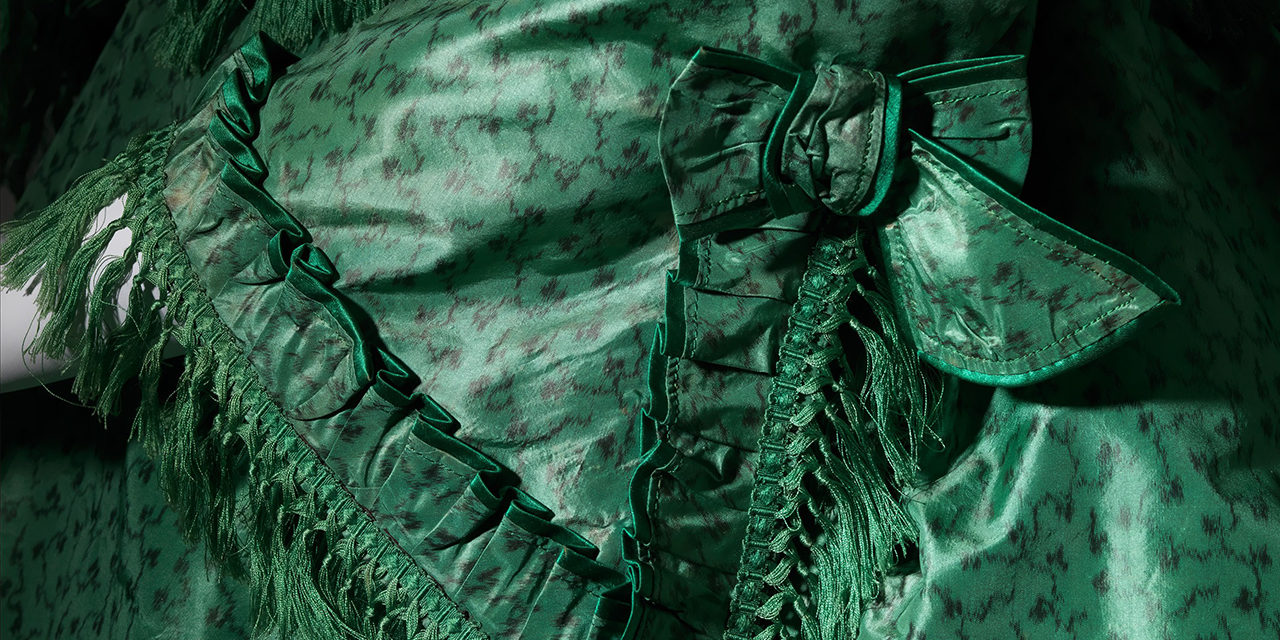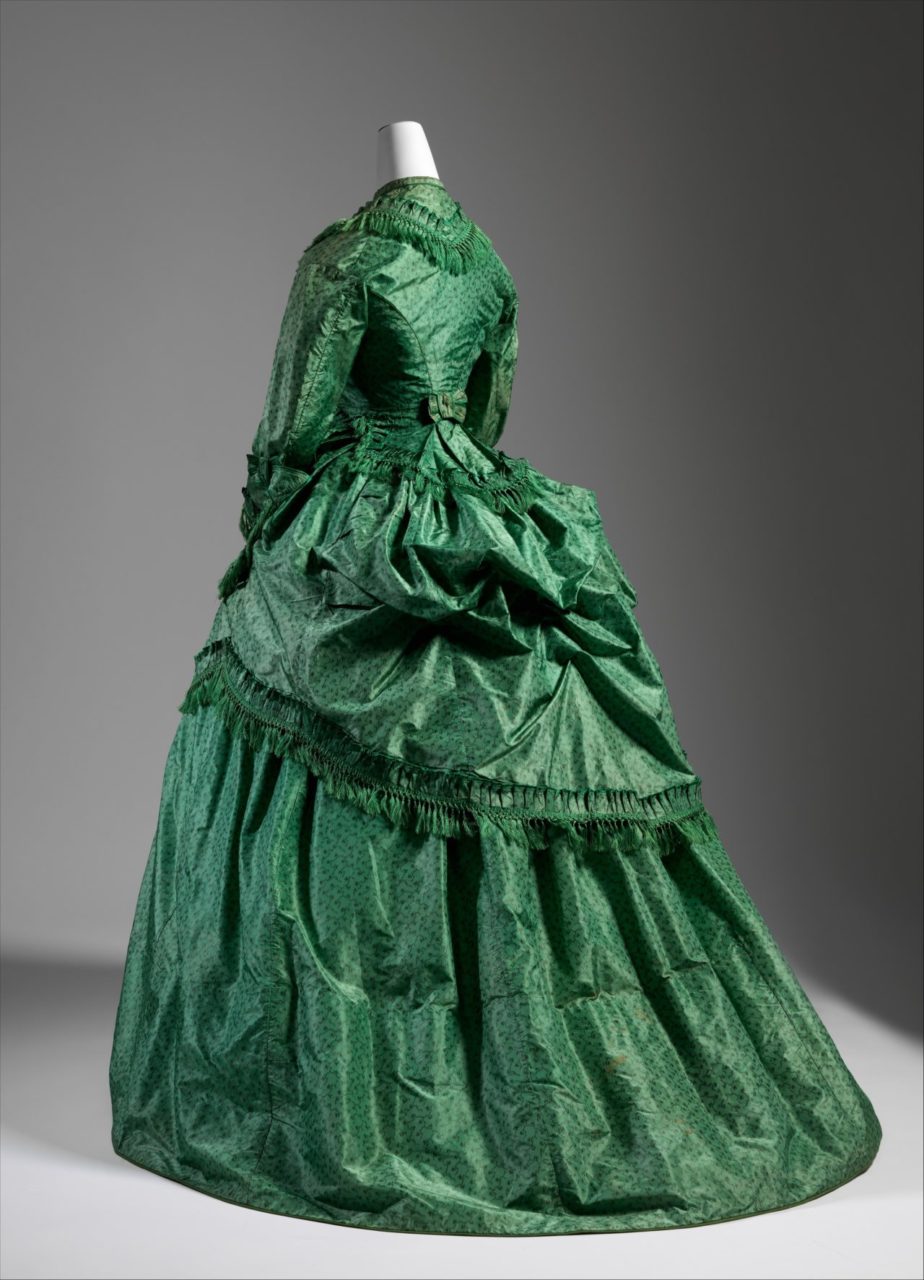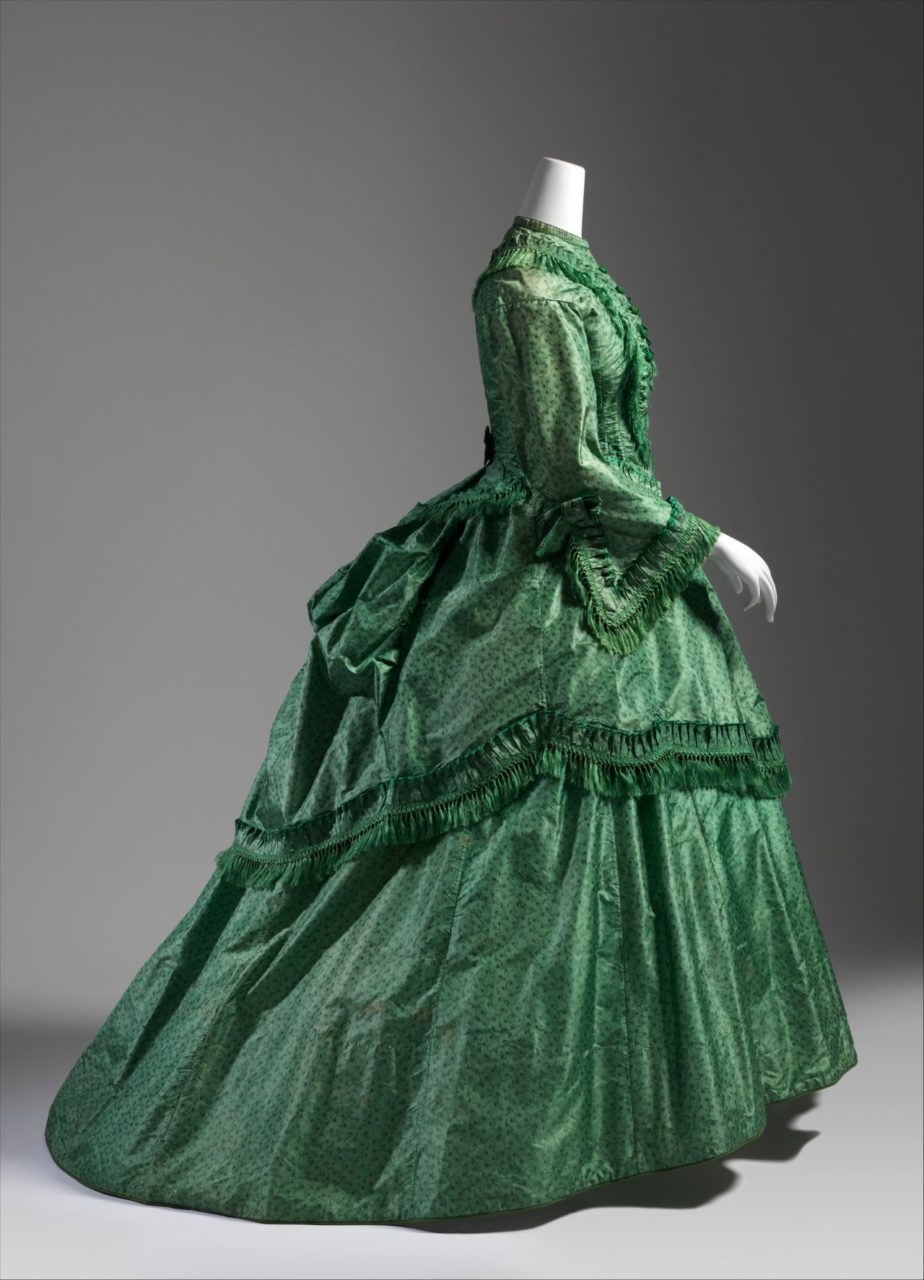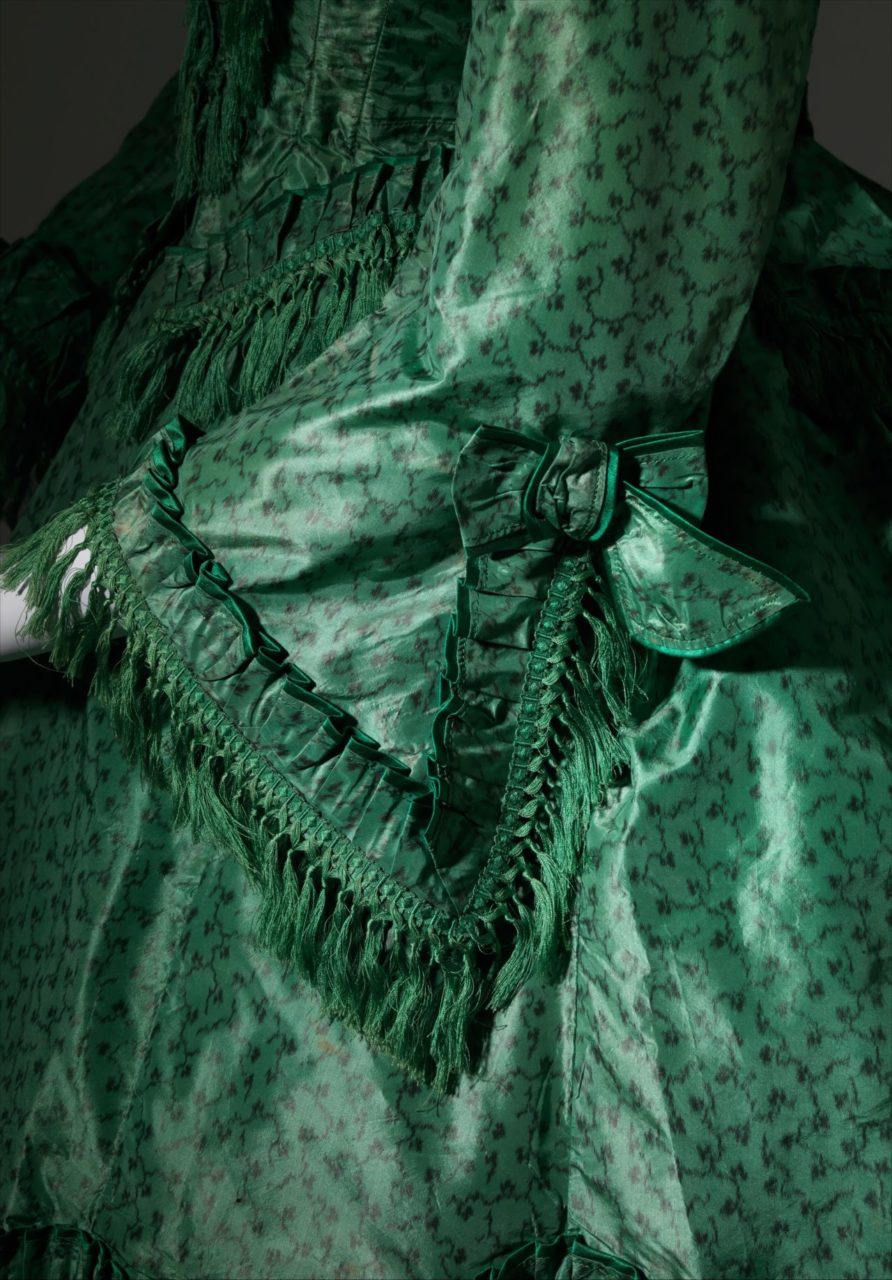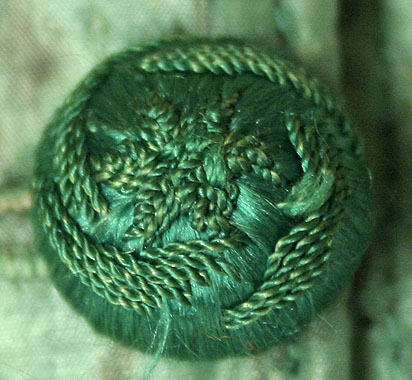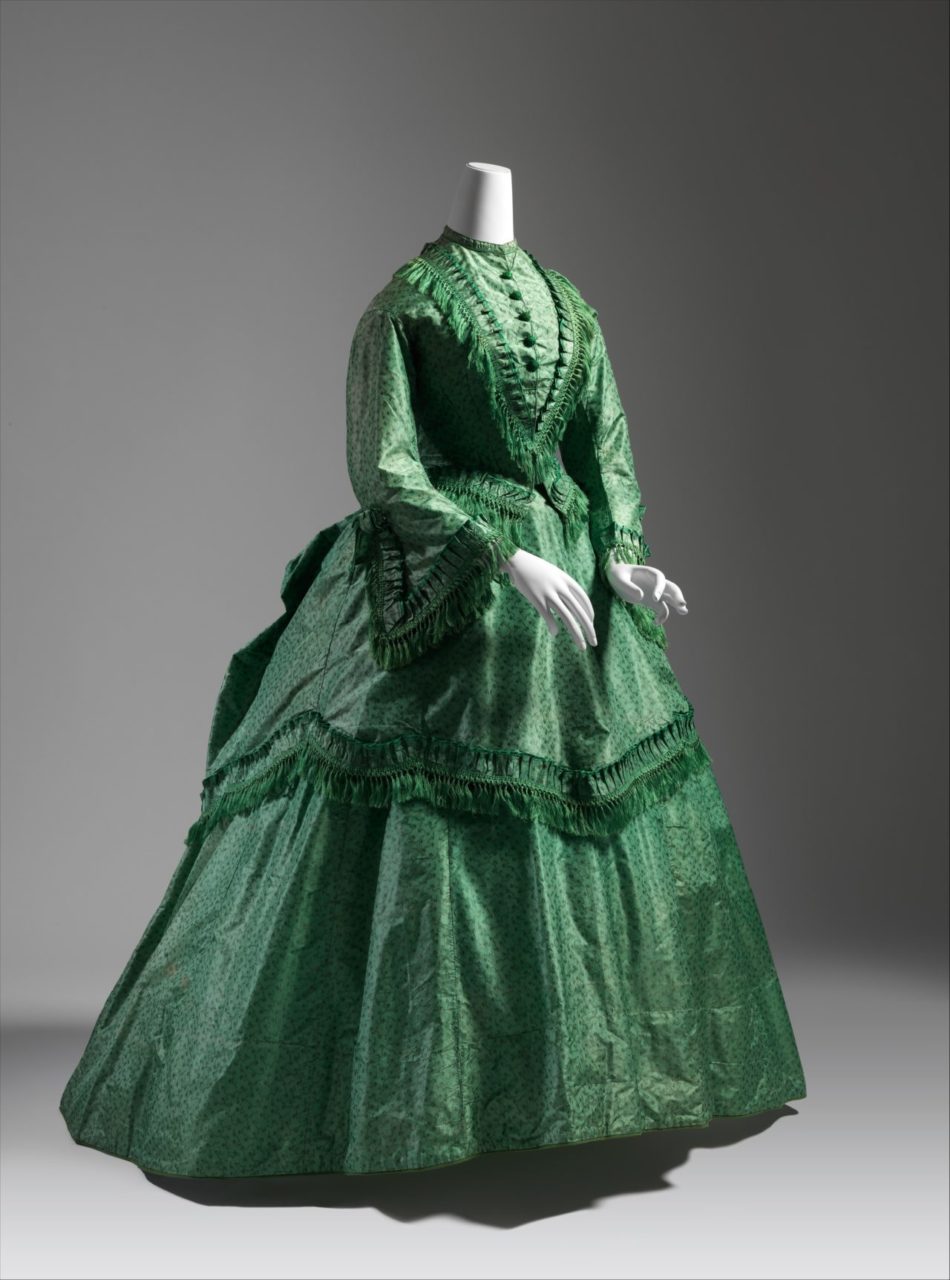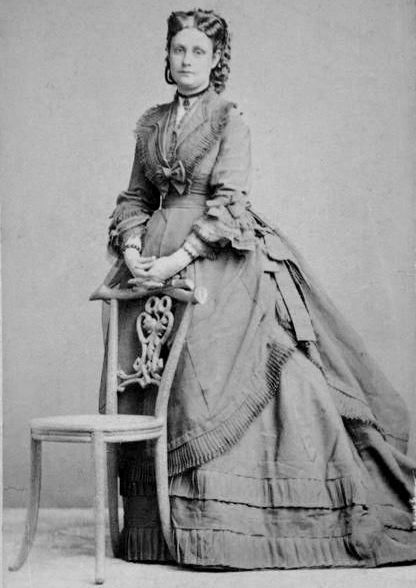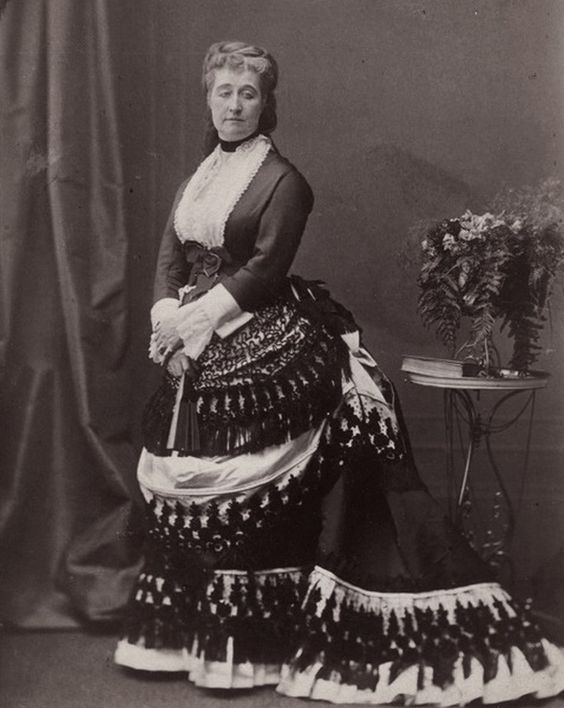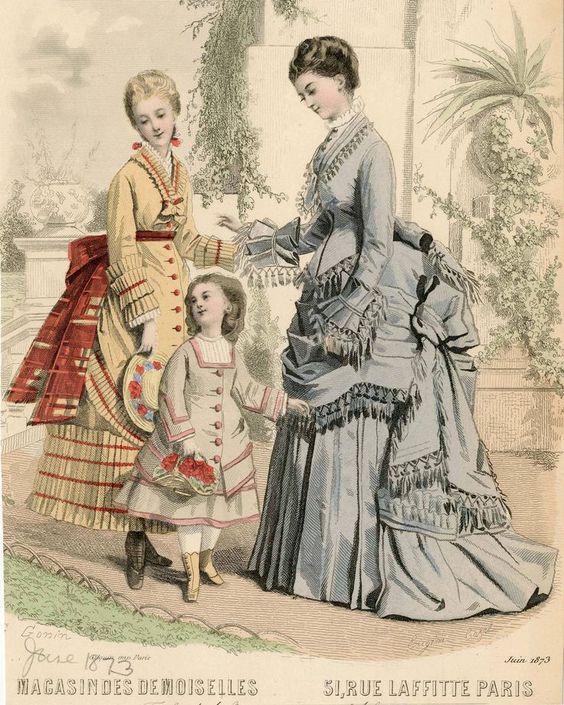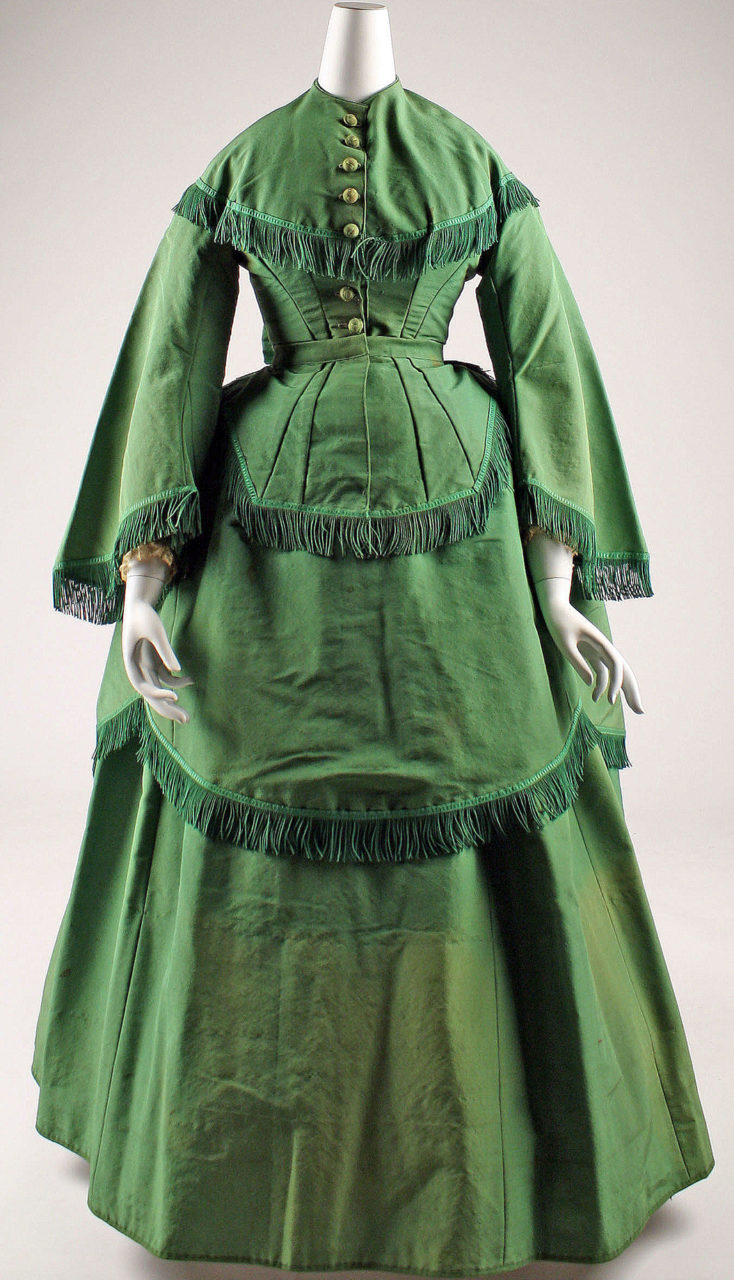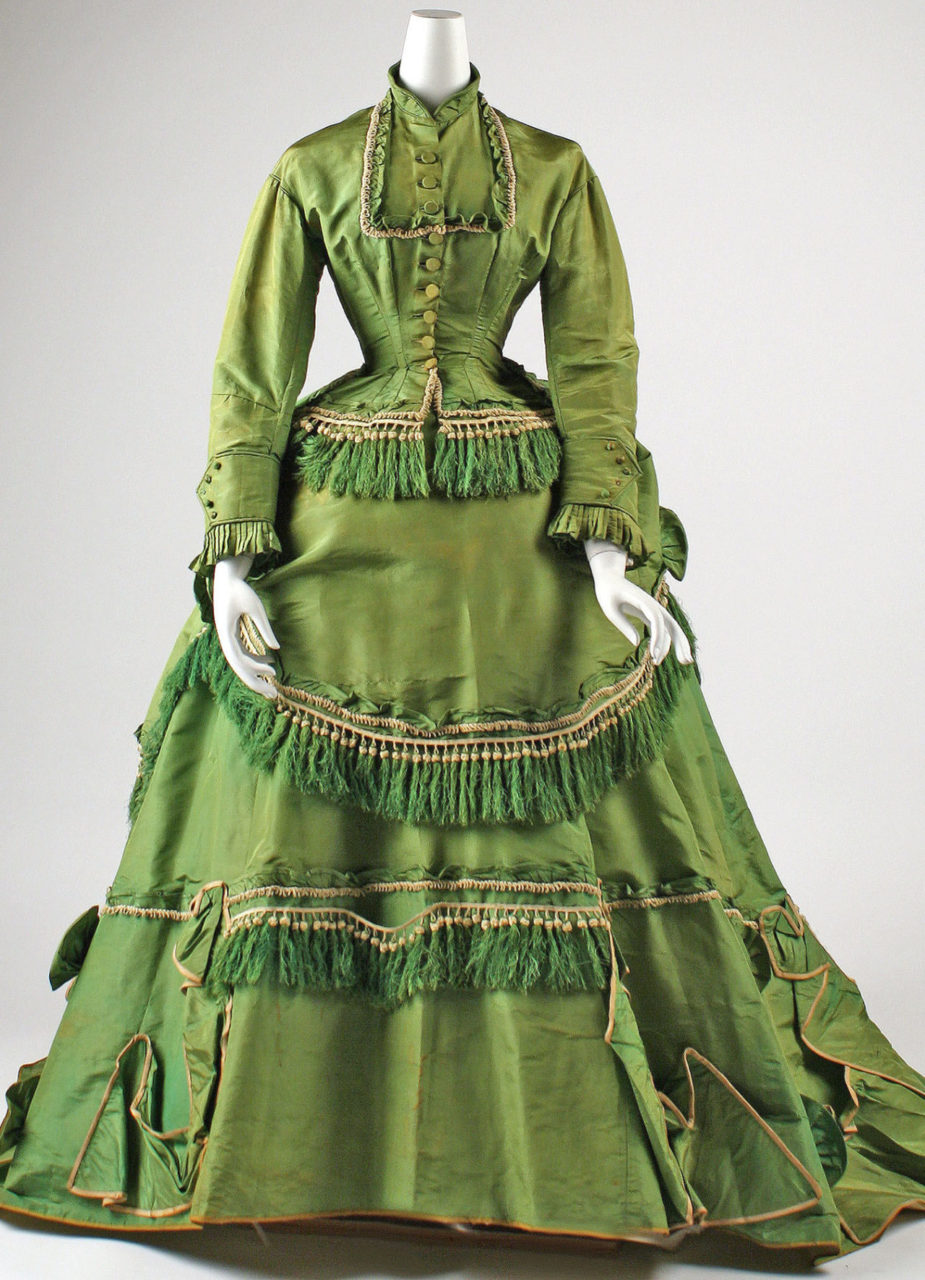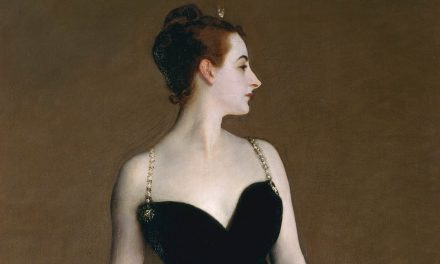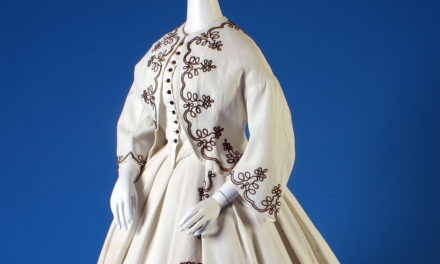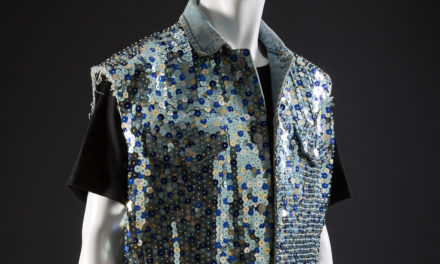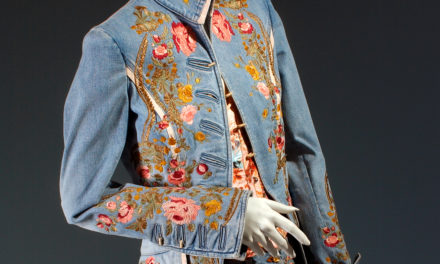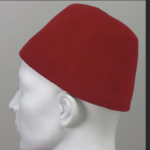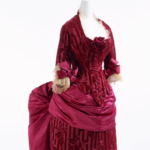This green silk day dress, patterned with an abstracted floral design, displays aspects of style associated with the early 1870s. Its bustle silhouette, vibrant hue, and abundance of trimmings all speak to its fashionability and provide an insight into the trends of the year.
About the Look
T
his day dress is made entirely of a vibrant green silk that is printed with a floral ditsy pattern in a darker shade of green. The bustled silhouette of this garment is straight in the front with added volume in the back, as was popular at the time (Fig. 2). Trimmings in the same green hue as the fabric adorn the sleeves, waist, skirt, princess lines, and neckline of the dress. These trims are comprised of rows of tassels beneath ruched strips of fabric (Fig. 3), culminating in bows at the elbows and back of the waist. Rows of tassels form a deep V down the front of the bodice, imitating a vest, and buttons with passementerie detailing in the same shade of green are positioned along center-front (Fig. 4).
Fig. 1 - Designer unknown (British). Dress Back View, 1870. Silk. New York: The Metropolitan Museum of Art, 1980.409.1a–c. Catharine Breyer Van Bomel Foundation Fund, 1980. Source: The Metropolitan Museum of Art
Fig. 2 - Designer unknown (British). Dress Side View, 1870. Silk. New York: The Metropolitan Museum of Art, 1980.409.1a–c. Catharine Breyer Van Bomel Foundation Fund, 1980. Source: The Metropolitan Museum of Art
Fig. 3 - Designer unknown (British). Dress Sleeve Detail, 1870. Silk. New York: The Metropolitan Museum of Art, 1980.409.1a–c. Catharine Breyer Van Bomel Foundation Fund, 1980. Source: The Metropolitan Museum of Art
Fig. 4 - Designer unknown (British). Button Detailing, 1870. Silk. New York: The Metropolitan Museum of Art, 1980.409.1a–c. Catharine Breyer Van Bomel Foundation Fund, 1980. Source: The Metropolitan Museum of Art
Green Dress with Tassels, 1870. Silk. New York: The Metropolitan Museum of Art, 1980.409.1a-c. Catherine Breyer Van Bomel Foundation Fund, 1980. Source: The Metropolitan Museum of Art
About the context
T
he silhouette of this garment, with a large bustle in the back overlaid with voluminous folds of fabric, was highly fashionable during the late 1860s and early 1870s. It was also considered stylish to create the illusion of a vest on a dress rather than overlaying separate garments atop one another. As explained in Godey’s Lady’s Book and Magazine’s “Chitchat on Fashions for November” (1871):
“Vests are the leading feature on all basques and sacques, both for outdoor and house dresses… sometimes they are only simulated by plastrons of silk or velvet, set smoothly on the basque front in vest shape, and trimmed at the outer edge. They give an appearance of breadth that is found to be very becoming.” (486)
Figure 5 is a fashion plate from 1870 that showcases this trend, with lapels built into the bodice of the dress, imitating a separate blazer. This image shares multiple similarities with the main garment, such as its bustled silhouette, imitation-jacket, and tablier, all decorated with large swathes of fringe and pleated fabric.
As noted in Godey’s Lady’s Book and Magazine’s “Chitchats on Fashions for October” (1871), combining multiple trims on one garment was considered to be incredibly stylish. This can be seen in many examples of gowns that include combinations of tassels, fringe, braids, bows, and ruched or pleated strips of fabric. Tassels and fringe were particularly fashionable at this time and were sometimes dyed to match the garment’s main fabric. This can be seen in the green day dress as well as in figure 6, which depicts a completely monochromatic outfit, detailed with trimmings such as fringe, pleats, and bows all in the same shade.
As opposed to these more tonal dresses, highly contrasting trimmings were sometimes used to create a dramatic look. As seen in figure 7, a carte de visite of the highly revered style icon, Empress Eugénie, large, black tassels over white fabric could be used to create a stunning effect. Focal points that trims were often placed on were the neckline, waist, sleeves, and hems of dresses as well as along various points of fullness on the skirt. Figure 8 depicts a light blue silk dress with similar trimming placement and drapery to those seen on the green day dress.
Fig. 5 - Artist unknown (American). Peterson's Magazine: Walking dress, 1870. Engraving. Bloomington: Indiana University. Source: HathiTrust Visual Library
Fig. 6 - Artist unknown. Princess Maria Annunciata of Bourbon-Two Sicilies, Archduchess of Austria, Princess of Tuscany, 1870s. Carte-de-visite photograph. Source: Pinterest
Fig. 7 - Artist unknown. Empress Eugénie of France, Mid-1870s. Carte-de-visite photograph. Source: Pinterest
Fig. 8 - Artist unknown (French). Magasin des Demoiselles, June 1873. Hand-colored engraving. Source: Pinterest
Fig. 9 - Designer unknown (American). Green Fringed Ensemble, 1868–70. Silk, wool. New York: The Metropolitan Museum of Art, C.I.53.50a–f. Gift of Miss Harriet Louise Berger, 1953. Source: The Metropolitan Museum of Art
Fig. 10 - Designer unknown (American). Green Transitional dress, 1868. Silk. New York: The Metropolitan Museum of Art, C.I.53.72.1a–c. Gift of Mrs. William R. Witherell, 1953. Source: The Metropolitan Museum of Art
Black was considered to be the most fashionable color during this time period, but closely following behind were deeply-saturated jewel tones. For example, the November 1869 edition of Godey’s Lady’s Book considers this particular “cypress green”, as one of the most popular colors of the season. This can be observed in other publications as well, such as in Bow Bells‘ “Fashions for December” (1869):
“Bright and beautiful are the tints of the fabrics which have been fashioned for the coming season of joyousness and mirth.” (430)
The creation of aniline dyes enabled fabrics be produced in a wide range of bright colors, including this popular green shade. This invention brought drastic changes to the fashion industry and vibrantly-dyed fabrics enticed and amazed consumers. An 1873 article titled, “A New Art” in Harper’s Bazar heavily praises the beauty of these newly-discovered synthetic colors:
“Many tints out of [an] infinite variety have been added to our list by the experimenters with the aniline dyes, and hues that were so evanescent and so beautiful when seen in the clouds that we hardly believed we saw them, but fancied them rather air deceptions or freaks of our imagination, have recently been established facts in our ribbons and tissues… effects of color give a vivid gratification… they bring an exquisite enjoyment which scarcely any thing else equals.” (658)
Figures 9 and 10, which are both from the Metropolitan Museum of Art’s costume collection, display various green shades that were achieved with aniline dyes. These dresses closely relate to the main garment in regards to color, silhouette, and trimmings and, together, they show an amalgamation of some of the period’s most-favored fashion trends.
Its Afterlife
Tthis dress was exhibited in the “From Queen to Empress: Victorian Dress 1837-1877” exhibition at the Metropolitan Museum of Art from December 15, 1988 to April 16, 1989.
References:
- “A New Art.” Harper’s Bazar 6, no. 42 (October 18, 1873): 658. https://libproxy.fitsuny.edu:2818/docview/1850150996?accountid=27253.
- “Chitchat on Fashions for November.” Godey’s Lady Book and Magazine 83 (December 1871): 485–86. https://babel.hathitrust.org/cgi/pt?id=umn.31951d00322056l;view=1up;seq=989.
- “Chitchat on Fashions for October.” Godey’s Lady Book and Magazine 83 (October 1871): 388. https://babel.hathitrust.org/cgi/pt?id=umn.31951d00322056l;view=1up;seq=900.
- “Fashions for December.” Bow Bells: A Weekly Magazine of General Literature 6, no. 278 (December 1, 1869): 430. https://babel.hathitrust.org/cgi/pt?id=umn.319510007314801;view=1up;seq=442.

